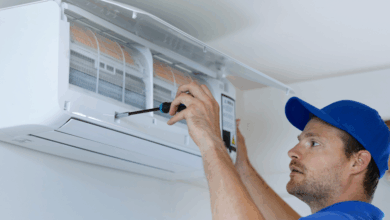7 Powerful Reasons to Replace Yours Today

A clean and working bathroom is important for a healthy home, but it’s also connected to the overall drain and sewer line system. People often forget about the shower drain, yet a broken, clogged, or old shower waste, even though it’s small, can cause big problems like mold, water damage, and bad smells. In this article, you will learn everything you need to know about shower drains, including what they do, how to clean and replace them, and how to choose the best shower waste drain.
What Is a Shower Drain?
The shower drain is the hole in the floor of your shower that lets water out. A shower waste cover usually keeps hair and other things from going down the pipes. It may look simple, but the drain is part of your home’s plumbing system and is very important for:
- Safely directing water out of the shower
- Keeping pipes from getting blocked
- Keeping sewer gases out of the bathroom
- A P-trap or U-bend pipe holds water and keeps smells from coming up through most drains.
Why the Shower Drain Matters
1. Prevents Water Damage
Water can pool and leak under tiles if the shower waste drain is blocked. This could hurt the floor of your bathroom or the ceiling below it.
2. Stops Mold and Mildew
Mold can grow in water that sits around a shower drain that is slow or clogged. Mold can hurt your health and damage your walls.
3. Eliminates Bad Smells
Sewer gas or bacteria can get into your bathroom through the drain and make it smell bad. A clean and well-sealed shower waste drain stops this from happening.
4. Improves Cleanliness
Dirt, hair, and soap scum can all get stuck in the drain. Cleaning your shower drain makes your bathroom cleaner and healthier overall.
5. Lowers Repair Costs
If you don’t take care of your shower waste drain, it could cause plumbing problems that are expensive to fix. Regular maintenance keeps those expensive repairs from happening.
6. Increases Home Value
Buyers will see that the home is well cared for if the bathroom is clean and has new fixtures, like a new shower drain.
7. Enhances Shower Comfort
It’s annoying to have to stand in water because the shower waste drain is slow. It is more fun to take a shower when the drain flows smoothly.
Common Types of Shower Waste Drains
Standard Floor Drain
This is the type that most people have. It is round and goes in the middle of the shower floor.
Linear Drain
This drain is long and rectangular and runs along the side of the shower. It’s fashionable and used in bathrooms today.
Point Drain
Small and located at the bottom of the shower floor. It works well with a lot of different layouts and drains water quickly.
Tile-In Drain
This type blends in with your floor tile and hides the shower drain cover. It looks like it is smooth and sleek.
You can put a shower waste drain cover on each of these types to keep hair, soap, and dirt from getting stuck in the drain.
Signs You Need a New Shower Waste Drain
- The water drains very slowly.
- The area around the drain smells like mold or sewage.
- The shower drain has cracks or rust that you can see.
- You clean it a lot, but it keeps getting stuck.
- Around the drain, there is mold or mildew.
How to Choose the Best Shower Drain Cover
There is more to picking a shower drain cover than just how it looks. It keeps your shower clean and protects your plumbing.
What to Look For:
- Choose brass or stainless steel for the material because it lasts longer and doesn’t rust.
- Size: Make sure the cover fits your current shower drain.
- Design: Look for designs that are easy to clean and don’t slip.
- Ease of removal: Some covers can be taken off by hand, which makes cleaning easier.
Top Brands:
- Oatey
- Kohler
- Schluter
- WingIts
- Zurn
These brands have both simple and decorative shower waste cover options.
How to Clean Your Shower Drain
- Step 1: Remove the shower drain cover
- Carefully lift it with a screwdriver or pry tool.
- Step 2: Remove Debris
- Use a drain snake or hook to get rid of hair, soap scum, and other junk.
- Step 3: Flush with Boiling Water
- Slowly pour hot water into the shower waste to break up soap scum and clear any blockages.
- Step 4: Use Baking Soda and Vinegar
- Add a cup of vinegar after pouring in half a cup of baking soda. After 15 minutes, flush it again with hot water.
Cleaning your shower waste regularly can keep it from getting clogged and keep it fresh and flowing.
Should You DIY or Hire a Professional?
DIY Repairs:
- Fixing things yourself:
- Best for cleaning the surface
- Fast and cheap
- Good for small clogs or changing the shower drain cover.
Hiring a Plumber:
- Needed to completely replace the shower drains
- Recommended for serious clogs or damage to pipes
- Expensive, but makes sure the job is done right
Cost of Replacing a Shower Drain
Typical Costs:
- Costs on average:
- Fixing it yourself: $10–$30
- Cleaning by a pro or a simple fix: $100 to $300
- Full replacement of the shower drain costs between $250 and $600.
The type of drain, labor rates, how easy it is to get to, and the materials used can all affect the cost. It might only cost less than $50 to replace the shower waste drain cover.
Where to Buy a Quality Shower Drain Cover
You can buy a shower drain cover online or at a hardware store near you. Here are some choices:
- Amazon: Lots of options and quick shipping
- Home Depot: A great place to see things in person
- Lowe’s: Lots of choices and low prices
- Local plumbing supply stores have high-end, professional-grade items.
Before you buy a new shower waste drain, always measure your current drain to make sure it will fit.
How to Replace a Shower Waste Drain
- If you need to, turn off the water.
- Take off the old shower drain cover.
- Take out the drain body by unscrewing it.
- Make sure the opening is very clean.
- Put in the new drain and seal it up.
- Put waterproof sealant around the edges.
- Run water through the new Shower Waste Drain to see if it works.
If you’re not sure, call a plumber
Mistakes to Avoid
- Using the wrong size cover for the shower drain
- Not cleaning the area before putting in a new drain
- Not properly sealing the drain
- Ignoring early signs of a blockage
- Using chemical drain cleaners too much can hurt pipes.
- Benefits of Upgrading Your Shower Waste Drain
Benefits of Upgrading Your Shower Drain
- New shower drain covers that don’t rust make things cleaner.
- Less likely to have plumbing problems or clogs
- Makes the bathroom look better and safer
- Saving money on repairs and water damage in the long run
Conclusion
The shower drain may seem like a small detail in your bathroom, but it plays a huge role in keeping your space clean, safe, and functional. Whether you’re dealing with slow drainage, bad smells, or outdated hardware, now is the time to act. A simple upgrade or even just replacing your shower waste cover can make a big difference.
Don’t wait for water damage or plumbing bills to pile up. Take control of your bathroom health by maintaining or upgrading your shower waste today.
FAQs
Q1. How often should I clean my shower waste drain?
To keep it from getting clogged and building up, you should clean it once a month.
Q2. What is the best material for a shower waste drain cover?
Stainless steel is a great choice because it doesn’t rust and lasts a long time.
Q3. Can I replace a shower waste drain by myself?
Yes, if the job is easy and you have the right tools. It’s best to call a plumber for more serious repairs.
Q4. Why does my shower waste drain smell bad?
This could be because of mold, clogs, or dry drain traps. Using vinegar and baking soda to clean can help.
Q5. How much does a good shower drain cover cost?
A good shower drain cover usually costs between $10 and $40, depending on the style and material.
Do you have questions, or are you ready to start your next project? Explore our services at AiRCO Mechanical!


